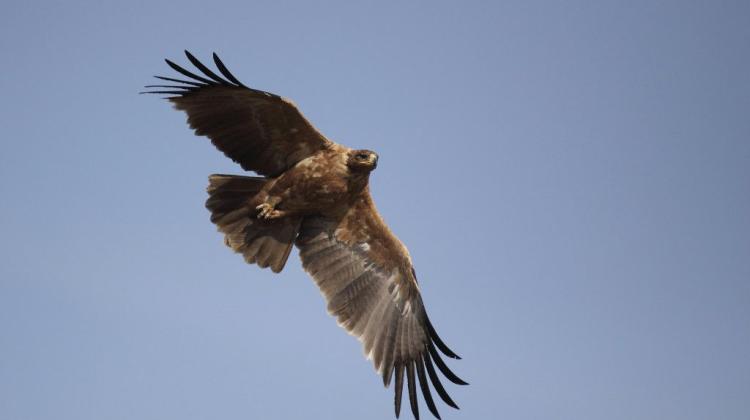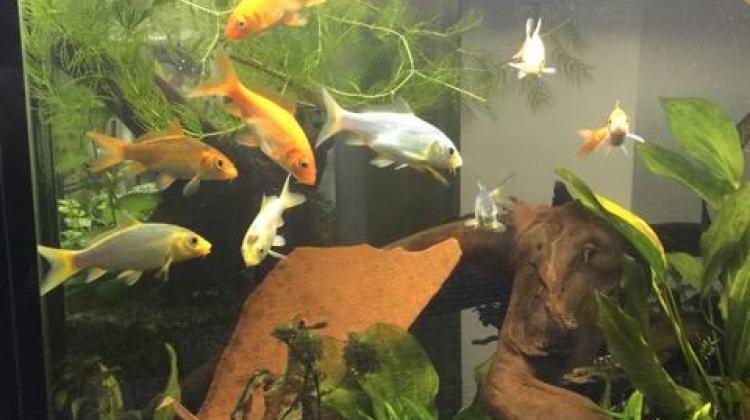Białystok/ Researchers at the University of Białystok watch lesser spotted eagles in their nest
 Photo: Fotolia
Photo: Fotolia
Interesting facts in the life of lesser spotted eagles, their biology and behaviour can be watched online thanks to the camera installed in one of the nests of these birds in Podlasie by scientists from the Institute of Biology, University of Białystok. The birds just made egg.
The main objective of this project is a wide popularisation of nature - in an attractive form, but also popularisation of science - told PAP Paweł Mirski from the Institute of Biology, University of Białystok. The originator of the project was Prof. Jan Taylor. The web camera in the nest in the Forestry District Rudka allows to watch the birds in their natural habitat. The material from observations will be used in research, possibly also in master\'s theses of students.
The camera was installed in the lesser spotted eagle nest in late March, before the birds returned from their wintering grounds. Lesser spotted eagles come back from wintering grounds in early April, but when delayed they may return even at the end of April. Their flight route is 11 thousand km, it takes up to 6 weeks. "At that time, the nest was in poor condition after the winter" - said Mirski. The camera recorded that first buzzards were interested in the nest, and - according to Mirski - "they were repairing the eagles\' home for 7 days". The camera even captured the moment when a buzzard was flying to the nest with a twig, but was driven out by the female eagle that returned to the nest.
On the same day as the female, the first male flew to the nest; it had a ring, on the basis of which it was determined that it was a five years old bird from the Lublin region. "Five years old, which means it would probably start breeding for the first time. The female appeared on the same day" - said Mirski. However, this did not mean that the eagles would be a pair. It turned out that in mid-April adult male flew to the nest, which - as scientists speculate - had lived in the nest before. That male and the female formed a pair.
Mirski noted that initially birds rarely appeared in the nest - after a long journey the eagles mainly preyed and rested. The camera recorded their courtship and mating, and in the beginning of May an egg appeared in the nest. There is a chance that the eagles will have offspring. The female incubates the egg, but there are times during the day, especially when it\'s warm, that she leaves the nest. It is also known that when the male brings the female food, it is passed to her somewhere on the branches around the nest, and not directly in it.
Scientists expect that another egg may appear in the nest in the coming days. "Eagles usually lay a second egg after three, five, sometimes even six days. Incubation lasts about 37-40 days. The first chick to hatch will have the advantage of these few days and be significantly older, stronger" - said Mirski.
He noted that the older chick will probably peck the younger, weaker chick, which often ends in the death of younger chick. It is a struggle for food. Eagles have to feed their young in a short time (in eight weeks to weigh 1.5 kg). They feed on small rodents, amphibians (they eat frogs, voles) and rearing two young often fails. "There are rare cases that two chick survive - one percent of the broods" - said Mirski. The chance of successfully rearing one young is 70 percent - he added.
The observed birds do not have names yet. "We should think about it" - he noted.
Observations can be carried at all hours, even at night. Broadcast equipment cost the university several thousand zlotys. Broadcast can be watched at http://biologia.biol-chem.uwb.edu.pl and https://www.youtube.com/watch?v=Iw-KIqgwWX0&feature=youtu.be.
Observations will continue until the end of the season. The chick should remain in the nest until early August.
Lesser spotted eagle (Aquila pomarina) is the smallest of eagle in Poland. The body length of this bird is approx. 60 cm, it weighs approx. 1.5 kg.
In recent years in Podlasie different entities carried out two projects connected with the protection of lesser spotted eagle and its rarer cousin - greater spotted eagle. Both projects were co-funded by the EU Life program.
PAP - Science and Scholarship in Poland
kow/ par/
tr. RL
Przed dodaniem komentarza prosimy o zapoznanie z Regulaminem forum serwisu Nauka w Polsce.


















